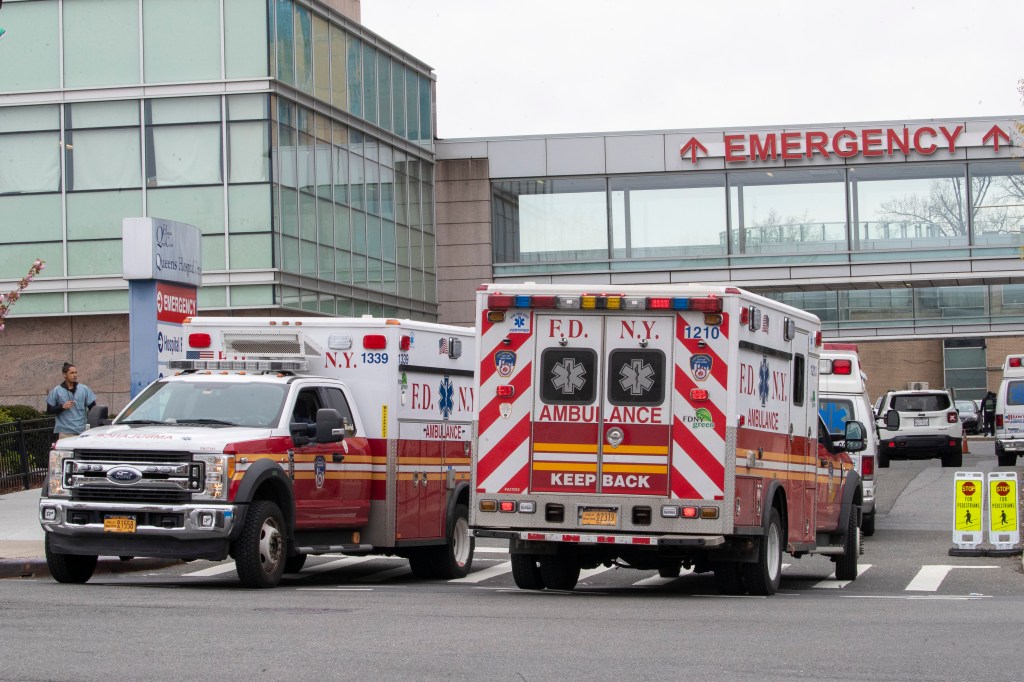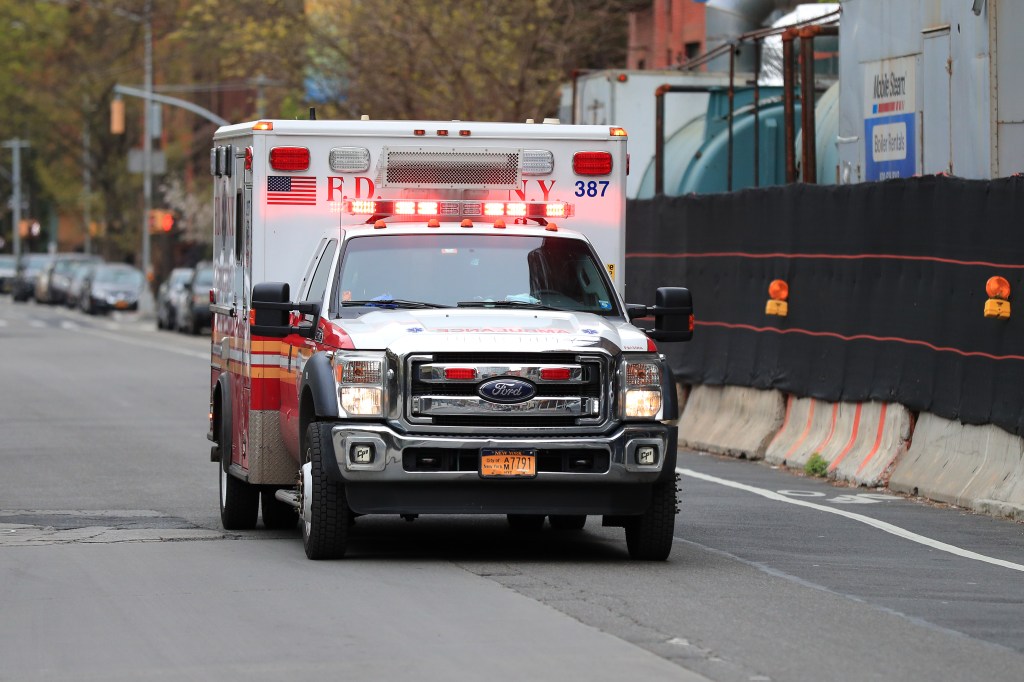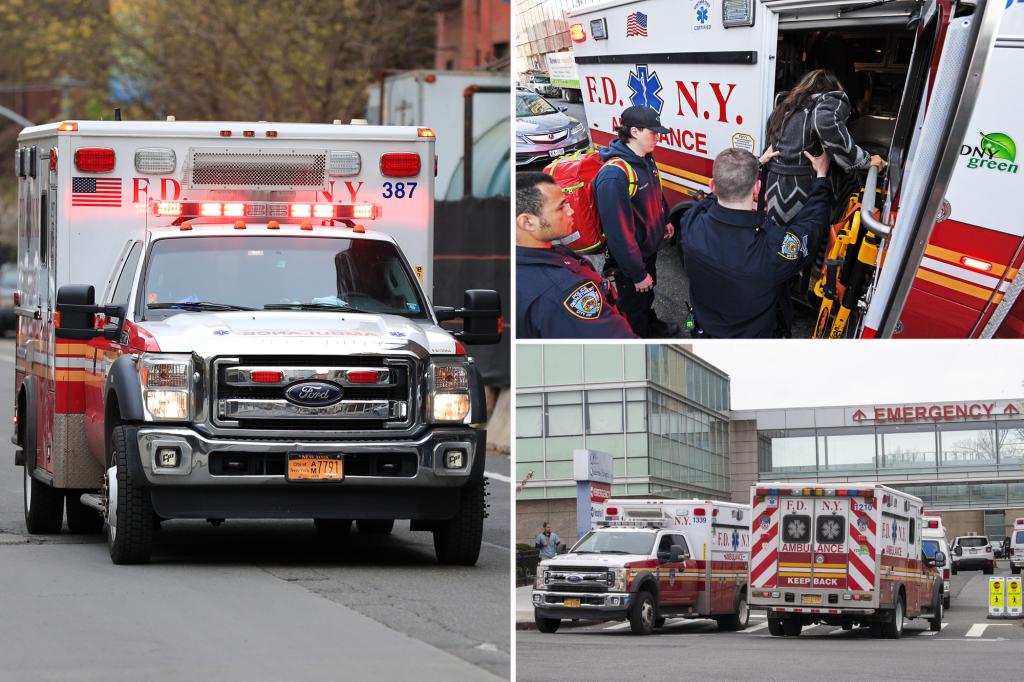A new city Fire Department directive aimed at slashing the rise in 911 response times has provoked a huge backlash, with patients and hospitals claiming it’s actually jeopardizing safety instead of being a lifesaver.
FDNY Commissioner Robert Tucker imposed a rule March 12 requiring EMS ambulance crews to transport all patients — whether their condition is life-threatening — to the nearest hospital, not one where the patients have a relationship with their doctor or where they prefer to go.

The previous directive only required ambulance crews to deliver patients to the closest hospital during severe or life-threatening medical emergencies.
The selection of the hospital is aided by a computer.
In rare instances, an appeal to a tele-FDNY doctor can overturn the computer-aided decision.
The new policy is too rigid and undermines patient safety and care, said Dr. Bret Rudy, executive vice president and chief of hospital operation at NYU Langone Hospital-Brooklyn.
He said that for example, a patient with a broken hip was recently sent to the emergency department of a hospital that didn’t have an orthopedic surgeon to perform surgery. NYU Langone’s team ended up going to the other hospital to transfer the patient to Langone for surgery.
“This policy does not produce good outcomes. It’s going to result in bad outcomes,” Rudy warned to The Post.
“It’s putting more patients at risk.”

The new directive has led to confrontations between patients and ambulance crews, too.
Eli Gottlieb, 84, said he was suffering from kidney failure and that his doctor, who was affiliated with Mt. Sinai Brooklyn, told him to call 911 for an ambulance to take him to the facility.
Gottlieb said he sat in an ambulance for 30 minutes as he haggled with its crew, which was instructed to take him to Maimonides Midwood Community Hospital.
Gottlieb refused to go there, noting that the hospital that treats him, Mt. Sinai Brooklyn, was not much farther away from his home.
The ambulance crew called the FDNY-teledoctor, who overruled the computer dispatch selection and allowed the ambulance crew to send him to Mt. Sinai Brooklyn. Gottlieb said the ordeal wasted precious time.
Asked how he would describe the nearest-hospital-first policy, Gottlieb responded, “Stupid — in a word.”

A woman in Bensonhurst, Brooklyn, also called 911 to transport her grandmother, who had blood in her stool, to NYU Langone-Brooklyn Hospital, which is in Sunset Park.
The woman, who requested anonymity, said her grandmother is Chinese and that she preferred to send grandma to a hospital with more Chinese-speaking staff.
But the paramedic and EMT in the ambulance said they had to take granny to Coney Island Hospital, which was closer.
The family ended up refusing the medical assistance and drove the grandmother to Langone-Brooklyn.
The new ambulance policy has “created a lot of consternation” in the hospital industry, said Kenneth Raske, CEO of the Greater New York Hospital Association. He said negotiations are ongoing to see if tweaks can be made to the directive.
But FDNY Commissioner Tucker defended the policy during a Post interview, as did the union leader representing paramedics and EMTS on 911 ambulance crews.
Tucker said some hospital officials are not happy that patients are not being steered to their hospitals by the FDNY 911 system.
“That’s a business dispute. I’m in the business of saving lives,” Tucker said.
“I don’t steer patients. I take them for the most part to the local hospital. We’re not the Uber business or Lyft business to take people where they want to go.”
He said transporting patients to the nearest hospital in most instances is “the right thing to do” so that ambulance crews can more quickly respond to the next 911 call.

The average ambulance response time to life-threatening emergencies jumped more than 34 seconds, from 8 minutes and 14 seconds in 2024 fiscal year to 8 minutes and 48 seconds for the first quarter of the 2025 fiscal year running from July 1 through November, according to the mayor’s management report in January.
The FDNY is in discussions with hospital officials over possible tweaks to the policy, but Tucker does not foresee dramatic change.
“It’s working,” he said. “Response times are coming down.”
A patient who is not facing a life-threatening situation can refuse medical assistance and take a private car service or other transport, Tucker noted.
Oren Barzilay, president of FDNY EMS Local 2507 representing FDNY EMS paramedics and EMTS, backed the new 911 directive, repeating many of the points made by Tucker.
He said some patients want to avoid the city’s public hospitals.
“People think we’re a cab service to take them where they want to go. We take you to the local hospital to be treated,” Barzilay said.
The post New FDNY order sending patients to closest hospital provokes backlash: ‘Stupid — in a word’ appeared first on New York Post.




